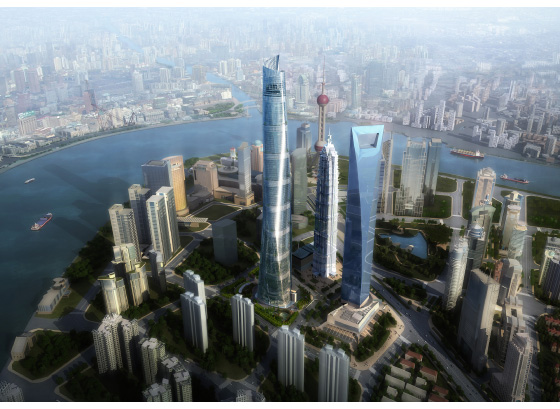Q+A with Peter Weingarten, Part 2 of 2
The first post in this two-part series, outlining the reasons why it’s important to pursue sustainable design in super tall buildings, is available here.
In the previous post we established why creating sustainable super tall buildings is important. Let’s talk about what these buildings mean for cities.
Q: Why are super tall buildings an important building typology for tomorrow’s cities?
A: I’m from New York. I grew up in one of the world’s most densely urban environments and one of the most successful. I think people need to appreciate tall buildings from the perspective of their footprint. It’s an urban sprawl issue.
When people talk about urbanization they use very different benchmarks. My definition of urban life has a very high density. For me, urban isn’t 8-12 stories; its 30-50.
We need vertical buildings to activate the public realm with people, to create dynamic street life in cities, to populate transportation systems and to ensure the vitality of retail and other life style programs. How many people are realistically served around a transit station? Without the proper density these systems fail.
Cities need density to bring economic prosperity to their streets and dynamism to neighborhoods. Smaller businesses thrive in that environment. Density isn’t about driving to big-box stores; it’s about walking to the corner to grab groceries. What can you get within walking distance, without ever using a car? That’s the question that drives the economy of dense urban streets.
Q: Do you think the reasons we build tall buildings are changing?
A: I think there will always be people who want to build bigger and taller. The accomplishment is still a benchmark to acknowledge success, and to announce a city or company’s arrival on the global stage. That’s not going away.
In the early days of New York, height was an advertisement for a company’s financial success. Super tall buildings housed companies: MetLife, GE, AT&T, etc. Skyscrapers were symbols of security and economic prosperity. Think of the New York Life building. Their corporate advertisements still feature their building, and their slogan is “the company you keep” with the building a symbol of stability through time.
Following the age of corporate identity came the age of individual egos. Trump Towers around the globe epitomize this, and more recently, the Mori Tower and the Burj Khalifa honor an individual.
Looking forward, it’s cities and countries that will make statements on a global stage. All the symbolism is still there, but there are changes in what is symbolized.
The power of cities more than that of individuals or corporations is coming into play. It’s like asking why people want to have the Olympics in their city. What happens to all the facilities after the games? How are all the buildings repurposed? The Bird’s Nest is sitting empty these days. The efficient thing would be to have the Olympics in the same location every year, but why don’t we do that? Because the Olympics aren’t about efficiency as much as they’re about aspirations of communities to achieve great things in sport and in the pride of there place
The way we advance as a civilization is through desire, and by aspiring to achieve greater things. Super tall buildings enable us to dream, to innovate, and to inspire. New York, London, Paris, Tokyo, Hong Kong, Shanghai—these cities have accelerated at the greatest pace and their hallmarks are their tall buildings of all scales.
In the future, building super tall will be tied success of a place more than they will be about the economic success of individuals or corporations.
